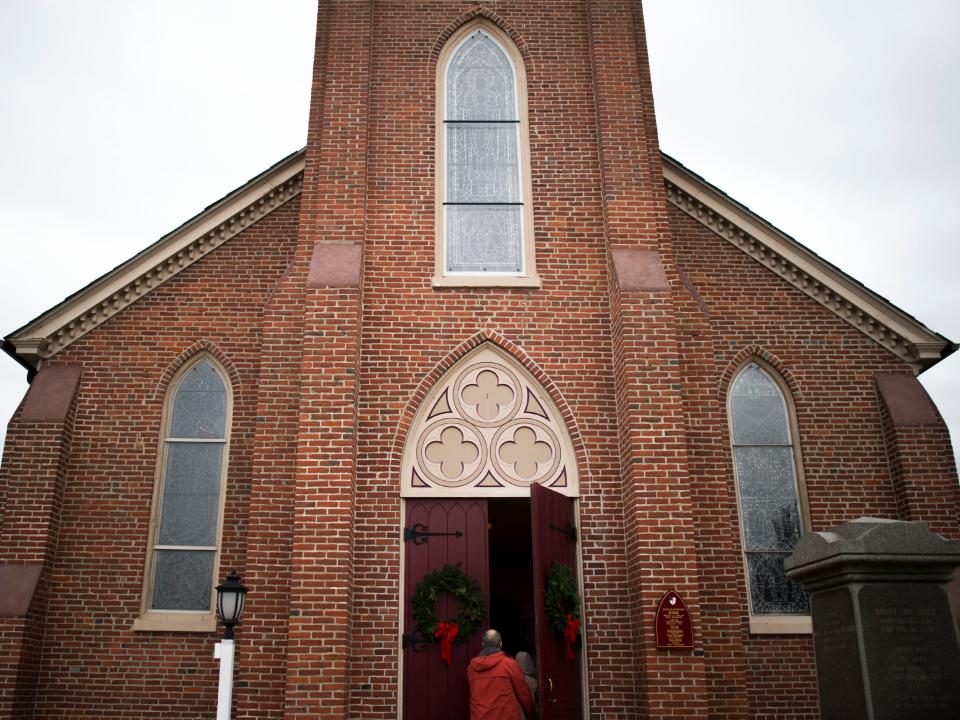'Here we are at Lewes': Author paints compelling portrait of 19th century Delaware town
- Oops!Something went wrong.Please try again later.
- Oops!Something went wrong.Please try again later.
“Here we are at Lewes,” Rebecca Harding Davis wrote in her novella, "Earthen Pitchers," as a small group of travelers disembarked from the train on the edge of town.
“They were alone on the grassy road, in the melancholy twilight. Far off the lights of the village burned red in the gray cold; white dunes of sand which to her unpracticed eye appeared interminable, stretched drearily toward the sea, whose sullen roar was rising with the evening wind.”
A pioneering author and social historian
Born in western Pennsylvania in 1831, Rebecca Harding began writing as a young woman, and she soon blossomed into a pioneering author and social historian. Married to L. Clarke Davis, a prominent newspaper editor, she rubbed shoulders with Nathaniel Hawthorne, Ralph Waldo Emerson, Oliver Wendell Holmes, and other 19th century authors.

Her 1861 novella, "Life in the Iron Mills," was a groundbreaking work that presented a compelling portrait of the corrupting effects of industrial capitalism. With the publication of "Life in the Iron Mills," Davis began a literary career that would last 50 years.
In 1873, Scribner’s Monthly Magazine published "Earthen Pitchers," in which the principal action takes place in Lewes. As the characters roamed the streets of the Delaware town, Davis used a few simple phrases to draw a perceptive portrait of St. Peter’s churchyard, the old Hotel Rodney, and what would become Memorial Park:
“Past the high grave-yard, looking down upon the quiet street out of the height of its eternal silence; past the bald, bare hotel with its many windows staring down at the bay, waiting hopelessly for the quiet to be broken; past the solemn group of pilots with their skins and breeches alike of leather color, seated on the old cannon, waiting for the bombardment of their grandfathers to be renewed, down to the edge of the rippling water.”
PIRATES OF FENWICK: Pirates of Fenwick Island: How buried coins, ghostly sounds keep the legend alive
Is that a spaceship? Delaware house of the future nominated for National Historic Register
"Earthen Pitchers" featured mostly female characters, a compelling quicksand episode and a trainwreck. According to Stephanie C, Palmer, a professor of American Culture and Literature and the author of "Together by Accident, American Local Color Literature and The Middle Class," “In nineteenth -century novels, quicksand was a common literacy device for representing sex, a threshold between stages in life, or a cure for selfishness.”
In Palmer’s thoughtful analysis of "Earthen Pitchers," she demonstrates how the introduction of the railroad brought urban and rural people together, and that often led to a clash of social classes.
Author: Lewes flirted with big city tenets but rejected them
In "Earthen Pitchers," Davis sees Lewes as a town whose residents flirted with the tenets of the big cities, and rejected them.

“But this is a place which has tried all agitation and work, and found it vain. Lewes is an old settlement, full of wealth and stir in the colonial times. Old legends hang about it of a tropical trade with the West Indies, of spicy breezes in the streets where stately ladies in brocade paced to church with a guard of black slaves. Now in its old age it has shaken off such frivolities and fallen into a perpetual calm. Even the railroad, as you see, passes on one side and will not waken it.”
Rebecca Harding Davis was well-known and widely read in the 19th century. In 1908, the Middletown Transcript serialized over three issues. Set on a small family-owned farm, "South Branch Farm" was one of her last works.
DELAWARE HUMOR: Coastal conspiracies: Rehoboth's Boardwalk fountain, Lewes' Fountain of Youth and more
HOLIDAYS: Join Santa on a train ride or at the zoo. Here's where to find him in Delaware this year
After Davis died in 1910, her works were mostly forgotten. Amid the blossoming feminist movement in the 20th century, however, there was renewed interest in her work. The complete text of Earthen Pitchers is now available online, and the novella is well worth the attention of the modern reader.
Principal sources
Maria Kimberly, “Rebecca Blaine Harding Davis (1831–1910),” Dictionary of Virginia Biography, Library of Virginia (1998– ), published 2016 (http://www.lva.virginia.gov/public/dvb/bio.asp?b=Davis_Rebecca_Blaine_Harding, accessed Oct. 27, 2023.
Emily Dolan Yale University, “Earthen Pitchers.” Scribner's Monthly Magazine, 1873 Nov.-April 1874, pp. 73-81, 199-207, 274-81, 490-94, 595-99, 714-21., “Rebecca Harding Davis: Complete Works,” accessed Oct. 23, 2023, pp22-23, 62. http://rebeccahardingdaviscompleteworks.com/items/show/28
Stephanie C, Palmer, "Together by Accicent, American Local Color Literature and The Middle Class," Lexington Books, Lanham, Maryland 2000, p. 91.
Middletown Transcript, Oct. 3, 5, 10. 1908.
This article originally appeared on Salisbury Daily Times: Author paints compelling portrait of 19th century Lewes

